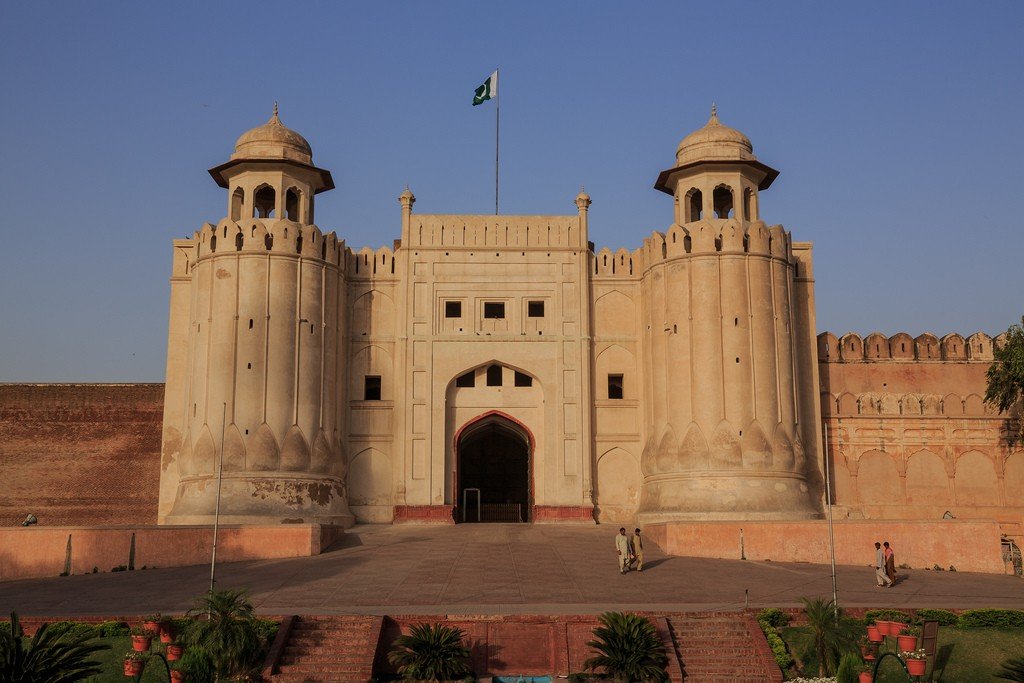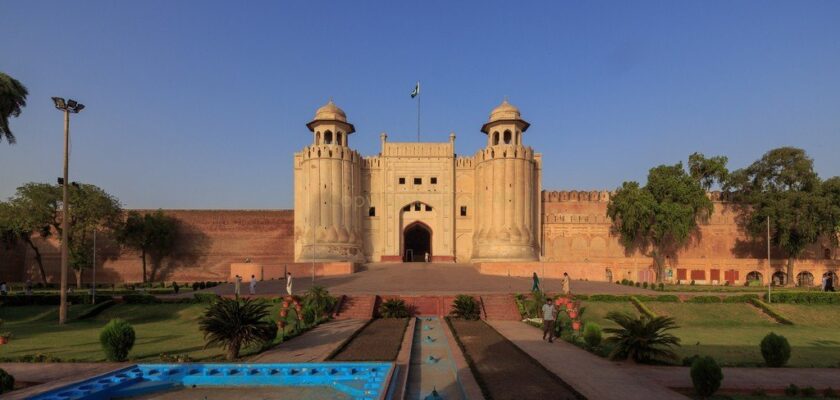Lahore Fort
Lahore Fort or Shahi Qila is an architectural and historical complex in the heart of the Pakistani city of Lahore, recognized as a World Heritage Site in 1981. The Lahore Fortress of Akbar the Great is trapezoidal in plan and covers an area of 20 hectares.










History
Apparently, the first royal residence on the banks of the Ravi was built for Muhammad Guri of the Gurid family in the late 12th century. This fortress attracted the attention of foreign conquerors and was repeatedly destroyed as the routes between Persia, Maverannahr, Tibet and India crossed at this strategically located point.
The present Lahore fortress of burnt brick and red sandstone was laid out by the Mughal emperor Akbar. Jahangir continued his father’s building endeavors, completing the northern courtyard in 1617-1618. In 1614-1625 the northern and north-western walls of the fortress were decorated under his rule. Shah Jahan, famous for building the Taj Mahal, was born in the Lahore Citadel and was therefore particularly attached to it. Under his rule, Shikh-kila was transformed from a fortification to a palace. The “mirror palace” and “audience hall” built for Shah Jahan were as lavishly decorated as the palace halls in Agra and Delhi.
.
After the fall of the Mughals, Shah-kila gradually fell into disrepair. In the early 19th century, the fort served as the residence of the Sikh ruler Ranjit Singh. In 1846 it passed into the hands of the British, who first (in 1849) renewed its fortifications, and then (in 1927) tore down a significant part of them. The splendid palace buildings quickly fell into disrepair and began to deteriorate. In the mid-20th century, the Lahore Fort was put under protection and has since become the object of close attention of local art historians.
.What to see
Behind the fort walls, inside which the Alamgiri Gate (an architectural symbol of Lahore – a building from the time of Aurangzeb) leads, are masterpieces of Mughal architecture – the Mirror Palace and the Pearl Mosque, built in the mid-17th century for Shah Jahan using exotic materials imported from India, such as Aleppo glass.
.In addition to the fortress itself, the Shalimar Gardens, laid out by Shah Jahan in 1641-42, are also under UNESCO protection. They extend over an area of 16 hectares along the so-called royal canal. In the immediate vicinity of the fortress lie several other outstanding monuments of Mughal architecture – the monumental “royal mosque” (Badshahi) and the Hazuri Bagh garden complex.
.